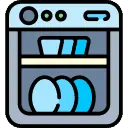Are you concerned about how to clean and sterilize your breast pump? You’re not alone. Many breastfeeding moms are concerned about maintaining good hygiene standards for their little ones and everything they come in contact with.
Cleaning breast pump parts can be particularly challenging, not to mention tedious and time-consuming. Depending on the type of pump you’re using, it might be hard to access some parts. However, it’s essential to clean your entire pump for the sake of your baby’s health.
As moms who’ve spent many combined years pumping, we’ve cleaned a variety of breast pumps. We’ve also studied the design of many others to determine the best process of cleaning any breast pump.
In this article, we’ll share everything we’ve learned about cleaning and sterilizing breast pumps. We’ll also explain how to keep your pump parts safe and in good working condition.
Key Takeaways
- Clean breast pump parts regularly using liquid dishwashing soap, warm water, and exclusive wash basins and brushes for baby items.
- Prevent mold growth by allowing parts to air-dry completely and storing them in a clean, closed space.
- Sterilize breast pump parts daily if your baby is under 3 months, premature, or has a weakened immune system.
- At the workplace, use baby-safe disinfectant wipes, microwave steam bags, or carry extra parts for a thorough cleaning at home.
Cleaning and Sterilization Tips
Let’s briefly touch on some of the top tips to keep in mind before diving deeper into specific instructions (1).
- Maintaining high hygiene standards is crucial: Wash your hands before and after using the pump to prevent the transfer of germs. The same applies to the surfaces you’ll use when pumping or cleaning.
- Mold is a pain: The thought of mold in the tubes is disgusting. While the tubes shouldn’t fill with liquid, they do occasionally get condensation inside, allowing mold to form and grow quickly. Having extra sets of tubing and other spare parts handy will enable you to discard moldy sets easily.
- Exclusivity is critical: To prevent germs from spreading, ensure your baby has their own set of everything, including wash basins, scrubbing materials, and dish towels.
- Clean storage space is essential: There’s no point in going through all the trouble of cleaning if the pump parts are going to end up in a dirty or dusty drawer. Set aside a special area in a closed space to store your equipment.
Dangerous Effects of Mold
Whether inhaled or ingested, some species of mold can cause allergic reactions, such as itchy skin and eyes. They also cause respiratory problems, like asthma and a compromised immune system, among other conditions (2).
What Soap Should I Use?
The U.S. Food & Drug Administration (FDA) guidelines recommend using liquid dishwashing soap and warm water to clean breast pump parts (3).
Some manufacturers such as Medela sell breast milk removal soap that moms can use to clean Medela pumps. Check with your manufacturer to see if they have specialized soap; otherwise, reach for your usual dishwashing soap.
How to Clean Your Breast Pump Parts
In line with the US Centers for Disease Control and Prevention (CDC) guidelines, this is how you should clean breast pump parts (4):
Before Each Use
- Wash your hands thoroughly with soap and water for no less than 20 seconds.
- Assemble your clean pump and parts and inspect everything for mold or soiling that may have occurred during storage. If you find any signs of mold in the tubing, throw it away immediately.
After Every Use
- Start by storing pumped milk in a collection bottle or bag. Seal and label it indicating the date and time it was pumped. Immediately store the milk in a fridge, a cooler bag with ice packs, or the freezer.
- Use disinfectant wipes to clean the countertop, pump dials, and power switch.
- Take apart the tubing and separate the valves, flanges, membranes, and milk collection bottles — everything that came into contact with your breast and breast milk.
- Use running water to remove residual milk from the parts that come into contact with your breast or breast milk.
- Clean the parts by hand or in a dishwasher as follows:
1. Cleaning by Hand
Place all the pump parts in a clean basin that’s used exclusively for washing your baby’s feeding equipment. Avoid washing the parts in the kitchen sink, as both the sink and drain may be contaminated with bacteria. This bacteria could find its way into the pump kit.
Fill the basin with hot water, then add soap. Scrub all parts using a clean brush that is used exclusively for cleaning your baby’s food items.
Rinse out the soap by holding the parts under running water. You can also submerge the kit in another basin filled with fresh water.
Remember that all these basins must be used exclusively for cleaning the baby’s feeding items. Place the pump, brush, and wash basin(s) on a clean and unused dish towel or a paper towel.
Allow them to air-dry — using a dish towel to dry them may transfer germs to the kit. Additionally, ensure that the drying area is free from dirt or dust.
2. Cleaning the Wash Basin and Brush
If you’ve used a wash basin and brush, rinse them thoroughly afterward, and allow them to air dry. This should be done after every use.
Consider washing them with warm water and soap every couple of days. If they’re dishwasher-safe, put them in there and clean them with hot water, using the heated drying cycle.
3. Using a Dishwasher
The first thing you need to do is check whether the manufacturer recommends using a dishwasher. Place the disassembled parts in the dishwasher, and run it using hot water and the heated drying cycle. The heated drying cycle or the sanitizing setting will help kill more germs.
Small parts can find their way into the dishwasher filter, so place them in a mesh laundry bag or closed-top basket suitable for the dishwasher. Wash your hands with soap and water before removing and storing the cleaned parts.
If some parts are still wet, air-dry them on a clean and unused towel or paper towel. Again, avoid using a dish towel to dry the parts, to minimize the risk of transferring germs.
How to Sterilize Breast Pump Parts
There are those of us who can’t stand the thought of germs lurking in our breast pump parts. Sterilizing the parts once a day should help put our minds to rest (5). You may want to pay extra attention to sterilizing your breast pump parts if your baby fits any of the following categories:
- They were born prematurely.
- They are under 3 months of age.
- They have a weakened immune system that may have been caused by medical treatment or illness.
Sterilizing pump parts may not be necessary for older, healthy babies, particularly if the parts are cleaned thoroughly after every use. If you do sterilize, remember to sterilize the wash basins and scrubbing brushes.
Take Note
For those who wash by hand, you can sterilize by steaming or boiling the items. Some items can be boiled, and others can’t, so check the manufacturer’s instructions to know which method to use.
1. Steaming
Depending on the manufacturer’s instructions, steam the parts using a microwave or an electric steam sterilizer. Some pump manufacturers, such as Medela, make sterilizer bags for the microwave. Check the manufacturer’s recommended time for steaming and cooling the items.
2. Boiling
All pump parts that are safe to boil should be placed in a pot, covered with water, and boiled for five minutes. Use clean tongs to remove the parts, and place them on a clean and unused towel or paper towel. Ensure they’re protected from dirt or dust, and let them air-dry properly.
Safe Storage
It’s vital for all pump parts, brushes, and wash basins to dry completely before you put them in storage. This will help prevent mold and germs from growing and thriving in them.
Wash your hands with soap and water before reassembling the clean and dry pump parts. You can store the kit in an unused and sealable food storage bag or any other protected area. The wash basins and brushes should also be stored in a clean area away from dust and dirt.
Cleaning Breast Pump Parts at the Workplace
When you have to return to work, cleaning breast pump parts may require a more mindful strategy. If your employer provides a lactation room with a sink and storage space, you are luckier than most. It will be easier for you to follow the cleaning guide shown above.
Here’s what to do if you can’t properly clean and sterilize the pump and its parts:
- Consider purchasing baby-safe disinfectant wipes to wipe down the pump and its parts once you rinse out residual milk.
- If you have access to a microwave, place the rinsed parts in a handy micro-steam bag to sterilize the parts.
- Carry extra parts that you can use whenever you need to express milk.
- Place all used parts in a separate bag for thorough cleaning once you get home.












